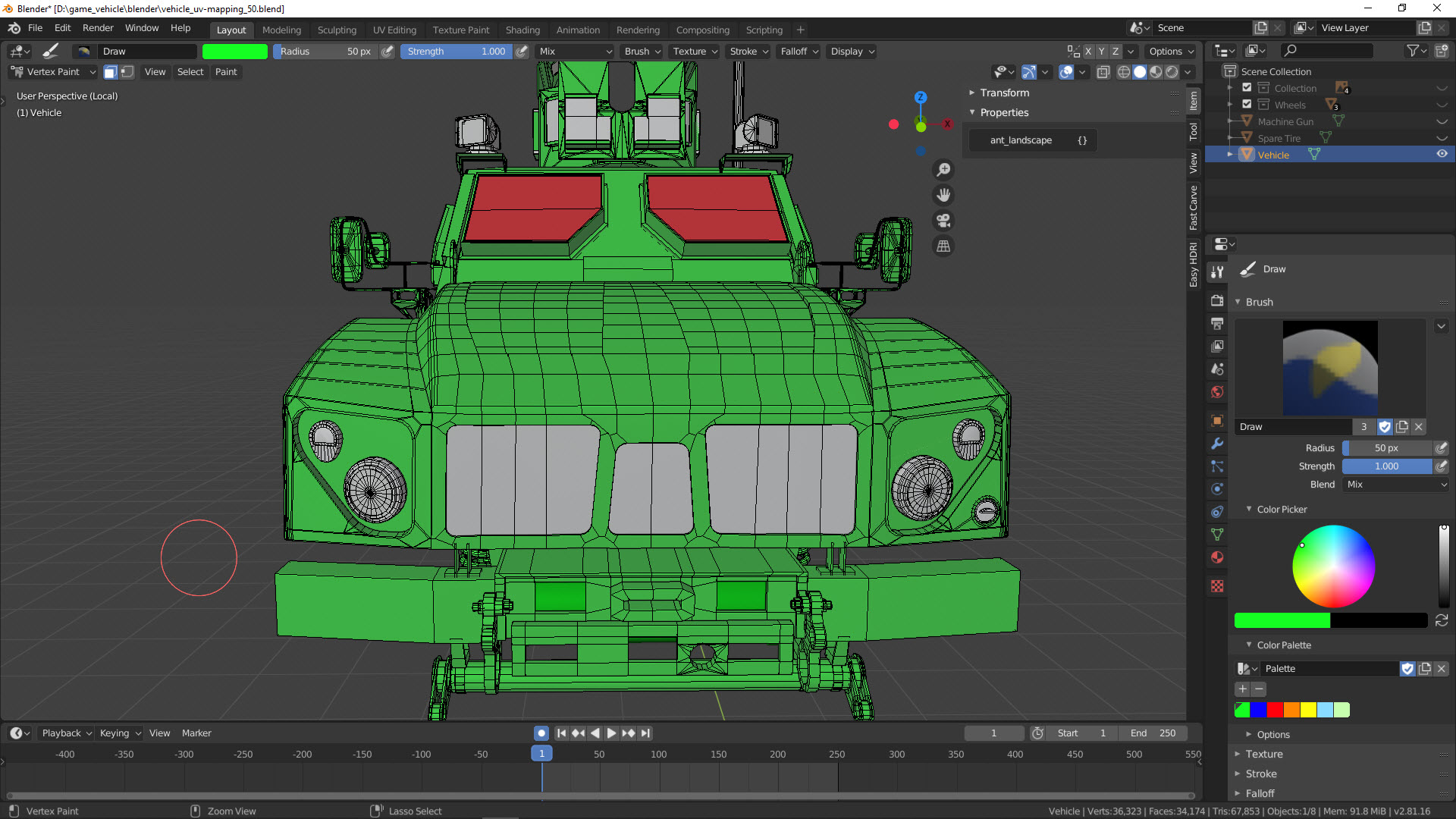

Terminating byte is odd, an extra null is added so that the data that follows will begin If the length of the string including the null
#VERTEX PAINTING LIGHTWAVE 3D SERIES#
Names or other character strings are written as a series of ASCII character valuesįollowed by a zero (or null) byte. Integers can be signed or unsigned and 1, 2 or 4 bytes in length. Signed Integer I1, I2, I4 Unsigned Integer U1, U2, U4 ID tags canīe interpreted as unsigned integers for comparison purposes. SURF, POLS, and LWO2 are all examples of ID tags. These tags are used to identify the data that follows. ID Tag ID4Īn ID tag is a sequence of 4 bytes containing 7-bit ASCII values, usually upper-case The shorthand names ( I2, F4,Įtc.) will be used throughout this document. All of theseĪre written in a byte order variously called big-endian, Motorola, or network order, with The atomic, or lowest-level, types used in object files are listed below. The format that includes annotated listings of file contents as well as several sample See also the Examples supplement, a more conversational introduction to The component descriptions include both a regular expressionĭefining the syntax and a discussion of the contents. This document outlines the object file format and provides a detailed reference forĮach of the components. To other files (images, for example), plug-ins, and envelopes containing parameter values Surface definitions can include references They may also contain one or more surfaceĭefinitions with no points or polygons at all. Object files can contain multiple layers, or parts, and each part can be a singleĬonnected mesh or several disjoint meshes. List of points, and "surfaces" refers to the collection of attributes, sometimesĬalled materials, that define the visual surface properties of polygons. Several geometric elements (faces, curves or patches, for example) defined by an ordered The data in LightWave 3D object files comprise the points, polygons and surfaces thatĭescribe the geometry and appearance of an object. This document describes the LWO2 file format for 3D objects used by LightWave.


 0 kommentar(er)
0 kommentar(er)
